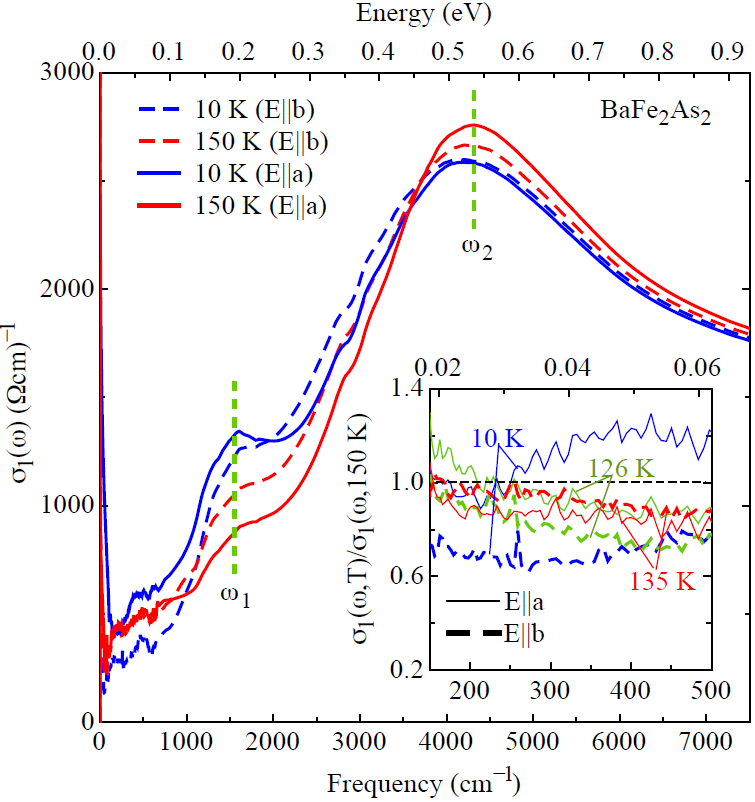Anisotropic in-plane optical conductivity in single-domain (detwinned)
Ba(Fe1-xCox)2As2

Measurements of the dc resistivity as a function of temperature of the single domain (detwinned) parent compounds BaFe2As2, SrFe2As2 and CaFe2As2 (i.e. so called 122 iron pnictides) reveal a modest in-plane dc anisotropy for temperatures below the tetragonal-orthorhombic structural transition at Ts, with the resistivity in the ferromagnetic direction (orthorhombic b-axis) larger than along the antiferromagnetic direction (orthorhombic a-axis). The transport properties revert to an isotropic in-plane conductivity once the structural transition is completely suppressed upon doping. For temperatures above Ts, there is a remarkably large sensitivity to uniaxial pressure, leading to a persisting band splitting and to a large induced in-plane resistivity anisotropy that is not observed for overdoped compositions. Both thermodynamic and transport measurements do not support an additional phase transition above Ts for unstressed crystals, so that the induced anisotropy above Ts is the result of a large nematic susceptibility. We studied the evolution of the expected anisotropy in the in-plane optical conductivity of detwinned Ba(Fe1-xCox)2As2 single crystals for x = 0, 2.5% and 4.5% in a broad energy range (3 meV-5 eV) across their structural at Ts and magnetic at TN (< Ts) transitions. Detwinned specimens were achieved with the crystal held under uniaxial pressure. Figure 2.13 shows the real part σ1(ω) of the optical conductivity of the representative detwinned parent compound BaFe2As2 at temperatures above and below Ts along both polarization directions.

For temperatures below Ts and TN, the topology of the reconstructed Fermi surface, combined with the distinct behavior of the scattering rates, determines the anisotropy of the low frequency optical response. For the itinerant charge carriers, we are able to disentangle the evolution of the Drude weights and scattering rates and to observe their enhancement along the orthorhombic antiferromagnetic a-axis with respect to the ferromagnetic b-axis. For temperatures above Ts, uniaxial stress leads to a finite in-plane anisotropy. The anisotropy of the optical conductivity, leading to a significant dichroism, extends to high frequencies in the mid- and near-infrared regions. The temperature dependence of the dichroism at all dopings scales with the anisotropy ratio of the dc conductivity, suggesting the electronic nature of the structural transition (Fig. 2.14). Our findings bear testimony to a large nematic susceptibility that couples very effectively to the uniaxial lattice strain.
Related papers
- external page Theoretical investigation of optical conductivity in Ba(Fe1-xCox)2As2
- external page Anisotropic charge dynamics in detwinned Ba(Fe1-xCox)2As2
- external page In-plane electronic anisotropy of underdoped ‘122’ Fe-arsenide superconductors revealed by measurements of detwinned single crystals